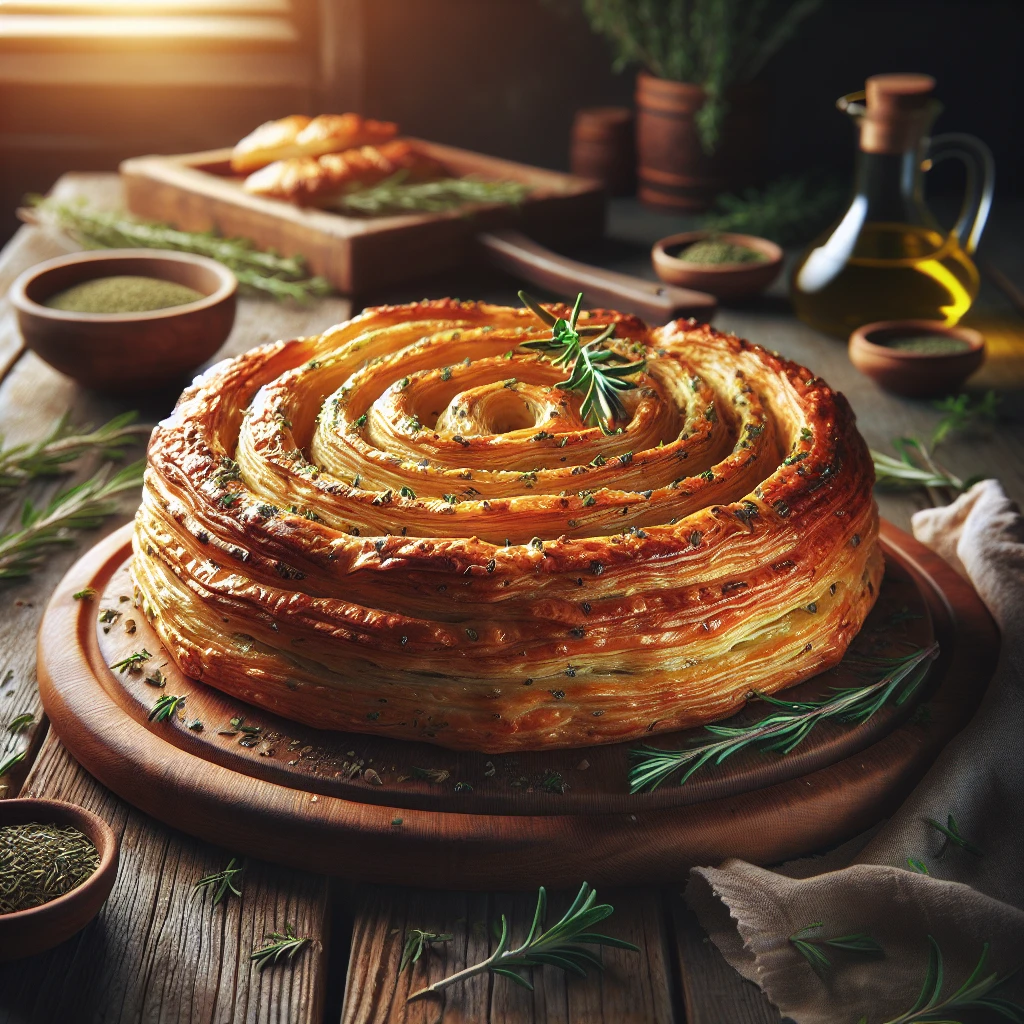
Welcome to a new take on a classic: Herb-Infused Whole Wheat Puff Pastry. This recipe combines the nutty richness of whole wheat with the fresh, aromatic burst of herbs, making it a delightful twist on traditional puff pastry.
Whole wheat flour is the star here, offering a nutty flavor and a bit more texture than all-purpose flour. The key to a flaky puff pastry is cold unsalted butter, which creates layers as it melts and bakes. The ice-cold water helps bring the dough together without melting the butter. A pinch of salt enhances all the flavors. Fresh thyme leaves, rosemary, and parsley infuse the dough with a fragrant, herby aroma that makes this pastry truly special.
This herb-infused puff pastry pairs beautifully with creamy soups or as a base for savory tarts. Try it with a goat cheese and tomato filling or use it as a crust for a rustic vegetable pie. The herbal notes also complement sweet toppings, such as a honey and fig combination.
Begin by mixing the whole wheat flour and salt in a large bowl. This step is crucial to evenly distribute the salt, ensuring each bite is flavorful. Next, add the diced cold unsalted butter. Use your fingertips or a pastry cutter to rub the butter into the flour until the mixture looks like coarse crumbs. This is where patience pays off, as these crumbs will help form those coveted flaky layers.
Now stir in the fresh herbs: thyme, rosemary, and parsley. They add not just flavor, but a lovely speckled appearance to the dough. Gradually add the ice-cold water, mixing gently until a dough begins to form. You might need slightly less or more water, so add it slowly.
Once your dough has come together, roll it out on a lightly floured surface into a rectangle. This is the fun part: fold the dough into thirds like a letter, then give it a 90-degree turn. Roll it out again, fold, and repeat this process two more times. This folding technique is what creates the layers in puff pastry. Wrap your dough in plastic wrap and let it rest in the refrigerator for at least 30 minutes. This resting period allows the gluten to relax and the butter to firm up, crucial for a tender, flaky pastry.